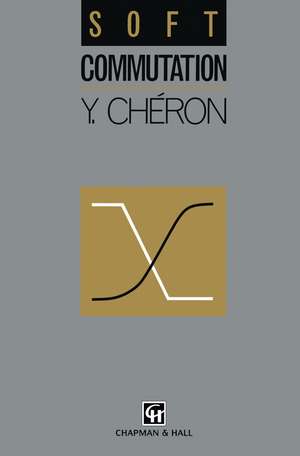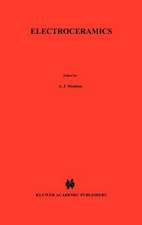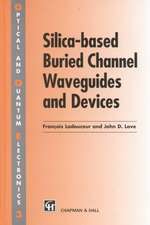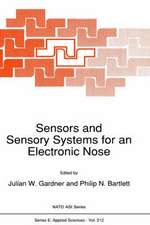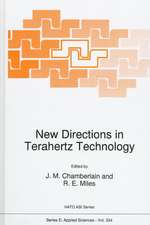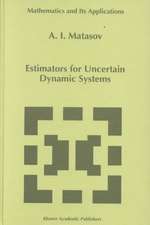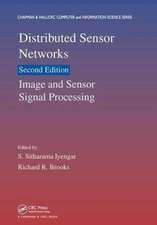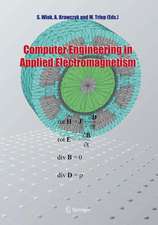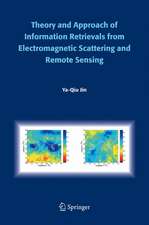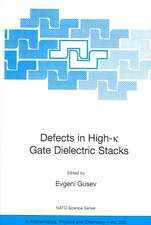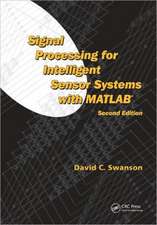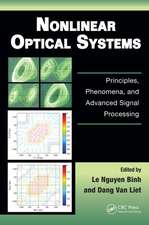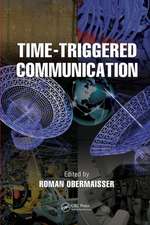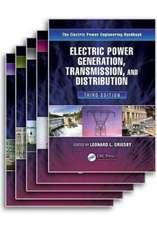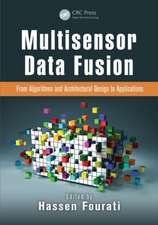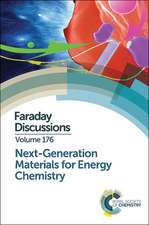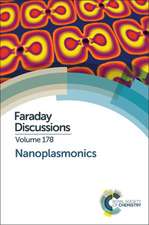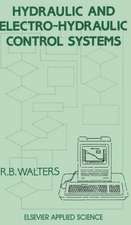Soft Commutation
Autor Y. Cheronen Limba Engleză Hardback – 31 mai 1992
| Toate formatele și edițiile | Preț | Express |
|---|---|---|
| Paperback (1) | 942.31 lei 6-8 săpt. | |
| SPRINGER NETHERLANDS – 30 oct 2012 | 942.31 lei 6-8 săpt. | |
| Hardback (1) | 948.47 lei 6-8 săpt. | |
| SPRINGER NETHERLANDS – 31 mai 1992 | 948.47 lei 6-8 săpt. |
Preț: 948.47 lei
Preț vechi: 1156.67 lei
-18% Nou
Puncte Express: 1423
Preț estimativ în valută:
181.50€ • 194.08$ • 151.32£
181.50€ • 194.08$ • 151.32£
Carte tipărită la comandă
Livrare economică 17 aprilie-01 mai
Preluare comenzi: 021 569.72.76
Specificații
ISBN-13: 9780412395109
ISBN-10: 041239510X
Pagini: 233
Ilustrații: XI, 233 p.
Dimensiuni: 155 x 235 x 16 mm
Greutate: 0.53 kg
Ediția:1992
Editura: SPRINGER NETHERLANDS
Colecția Springer
Locul publicării:Dordrecht, Netherlands
ISBN-10: 041239510X
Pagini: 233
Ilustrații: XI, 233 p.
Dimensiuni: 155 x 235 x 16 mm
Greutate: 0.53 kg
Ediția:1992
Editura: SPRINGER NETHERLANDS
Colecția Springer
Locul publicării:Dordrecht, Netherlands
Public țintă
ResearchCuprins
1 Constituent parts of static converters.- 1.1 Introduction.- 1.2 The concept of a switch.- 1.3 Classification of switches.- 1.4 Characterization of sources.- 1.5 Basic principles of static converters.- 1.6 Structures of static converters.- 1.7 Conclusion.- 2 The concept of duality in static converters.- 2.1 Introduction.- 2.2 Review of duality applied to graphs and circuits.- 2.3 Dual static switches.- 2.4 The dual thyristor.- 2.5 Applying duality rules in static converters.- 2.6 Extension to complex structures 2.- 2.7 Conclusion.- 3 Resonant inverters.- 3.1 Introduction.- 3.2 Resonant inverter structures.- 3.3 Review of resonant circuits.- 3.4 Properties of resonant inverters.- 3.5 Conclusion.- 4 Soft commutation.- 4.1 Introduction.- 4.2 General remarks about commutation in static converters.- 4.3 Soft commutation in an elementary commutation cell.- 4.4 Examples of converters operating in the soft commutation mode.- 4.5 Soft commutation and power control 57 4.5 Conclusion.- 5 Forced commutation.- 5.1 Introduction.- 5.2 Forced commutation in DC/DC converters.- 5.3 Forced commutation and duality.- 5.4 Forced commutation in DC/AC converters.- 5.5 Quasi-resonant converters.- 5.6 Conclusion.- 6 Static conversion through an AC link.- 6.1 Introduction.- 6.2 DC/DC conversion.- 6.3 Resonant converters.- 6.4 Power control in resonant converters.- 6.5 DC/AC conversion.- 6.6 General comments on resonant conversion.- 6.7 Conclusion.- 7 Design and applications.- 7.1 Introduction.- 7.2 Design of resonant converters.- 7.3 Applications.- 7.4 Conclusion.- 8 Conclusion.- Appendix A1 Notation — normalized units.- Appendix A2 Small signal analysis and modelling of the series resonant converter operating above the natural frequency.- A2.1 Assumptions.- A2.2 State plane analysis.- A2.3Study of the steady state mode.- A2.4 Static characteristics with fixed u.- A2.4 Small signal modelling.- Appendix A3 Detailed analysis of the series resonant converter operating above the natural frequency.- A3.1 Influence of the capacitative snubbers in the inverter.- A3.2 Influence of transformer imperfections.- Appendix A4 Optimal control of the series resonant converter.- A4.1 Introduction.- A4.2 Assumptions.- A4.3 Analysis.- A4.4 Optimal control.- A4.5 Static characteristics.- A4.5 Conclusion.- Appendix A5 Phase shift control.- A5.1 Principle.- A5.2 Characteristics.- A5.3 Limits.- Appendix A6 Controlled rectification and reversibility.- A6.1 Introduction.- A6.2 Assumptions.- A6.3 Analysis.- A6.4 Analysis.- A6.5 Analysis of the commutation.- A6.6 Component stresses.- References.
Recenzii
It provides a thorough...insight in to the design of resonant mode converters and the use of soft commutation techniques to minimise stress on the switching components. - New Electronics
